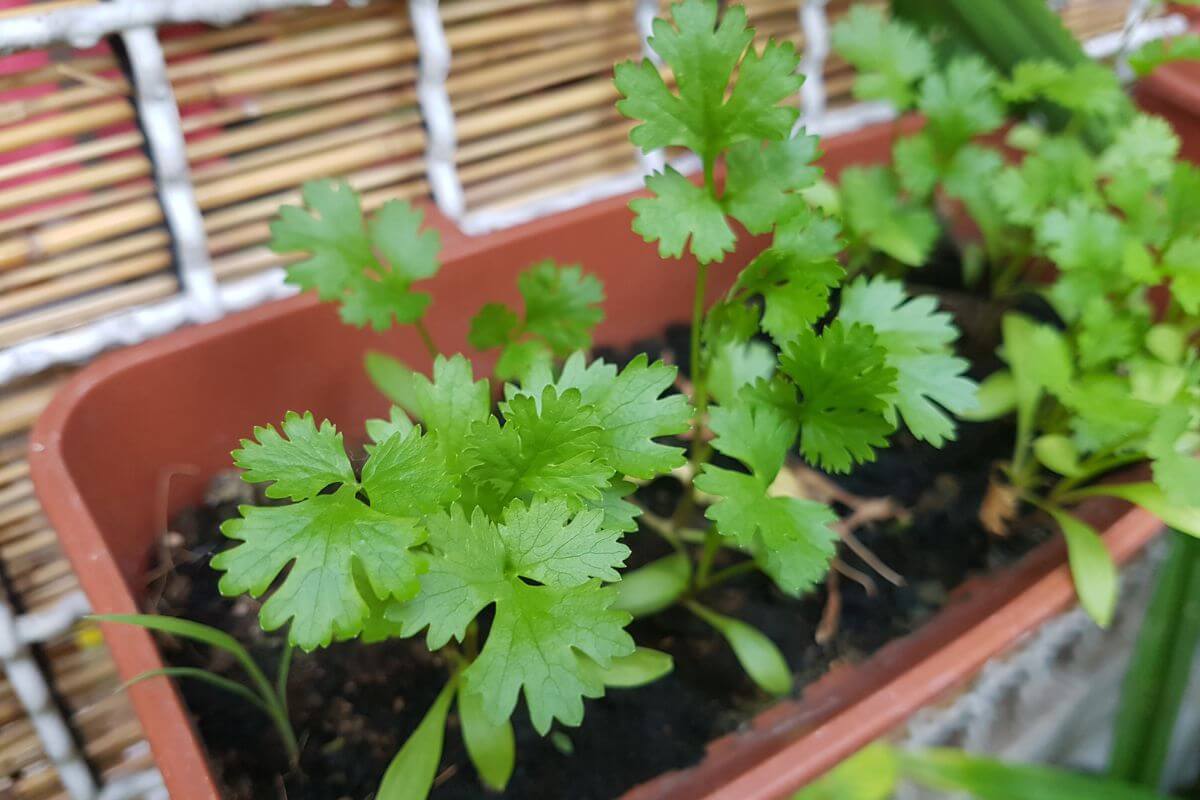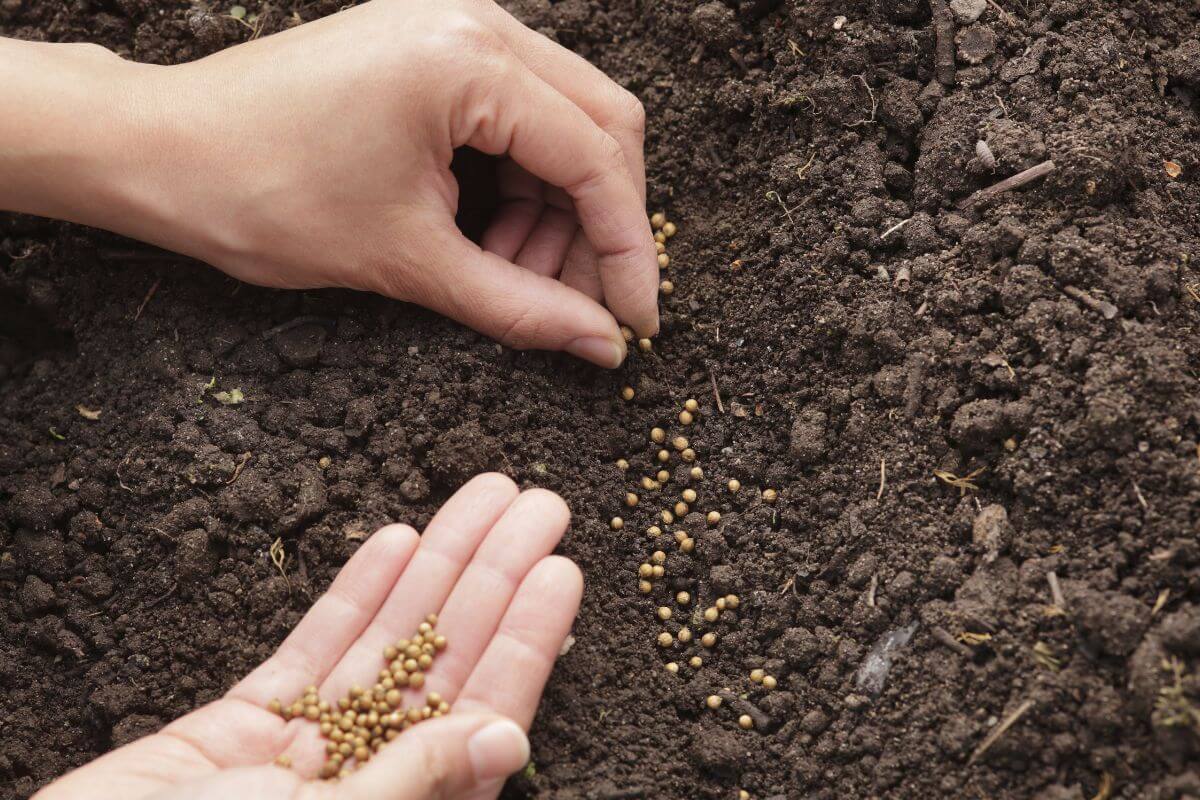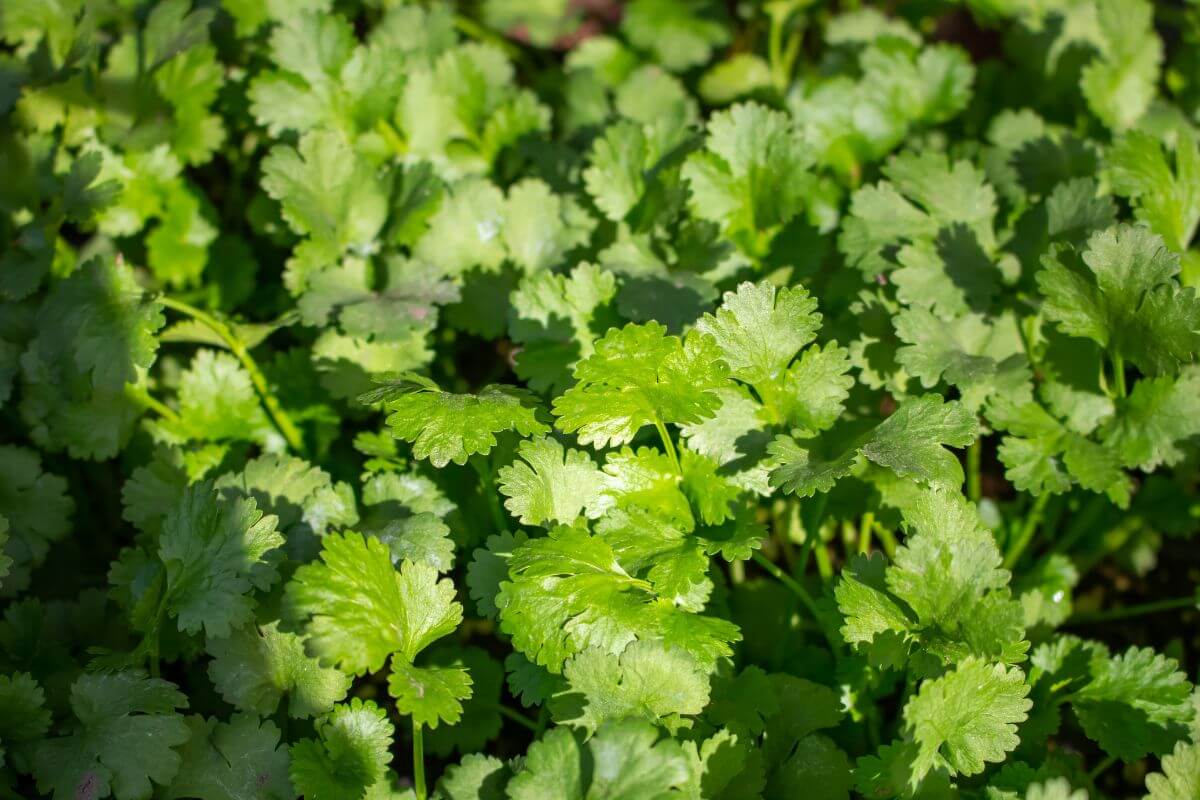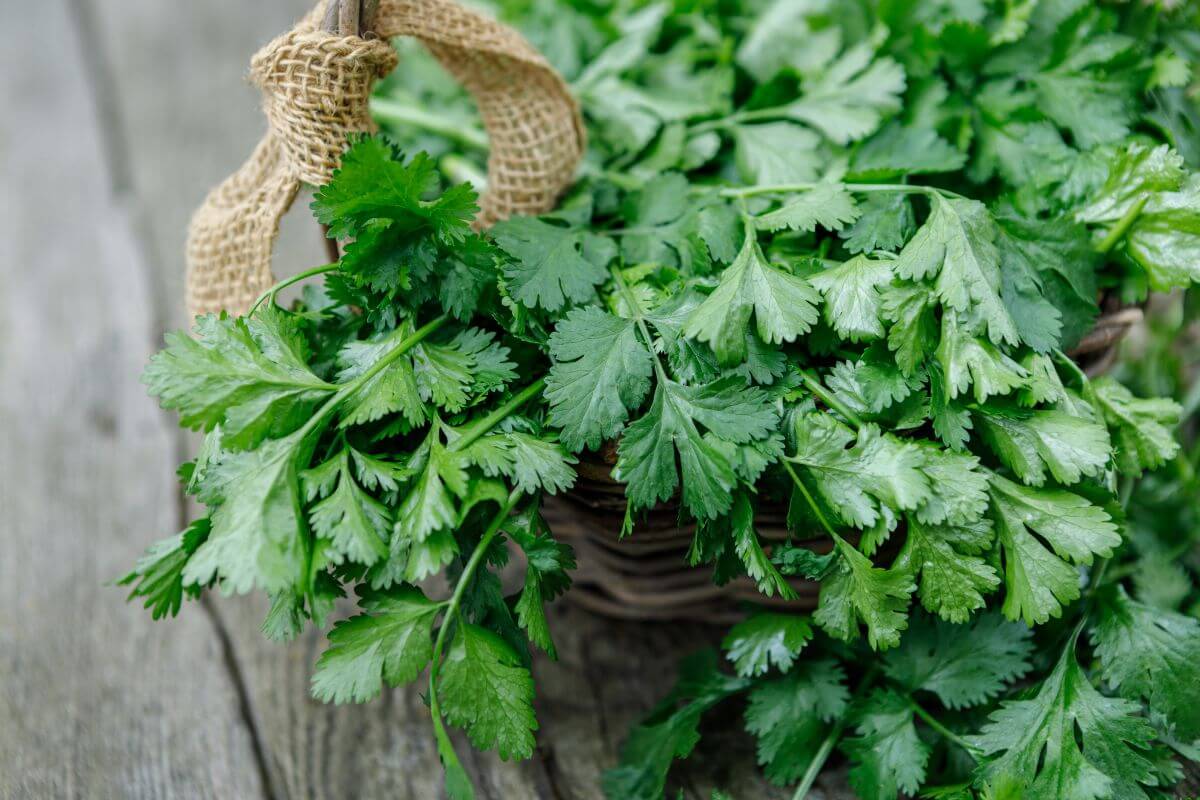Cilantro is a tasty herb that’s a great addition to many dishes. Cilantro is also known as coriander, Chinese parsley, or dhania.
If you’re a fan of fresh cilantro, then growing organic cilantro can be much more economical than buying it from the store. Starting my own organic garden is one of the best decisions I’ve ever made.
- Read More: Starting an Organic Garden Guide
In this article I’ll touch upon preparing your site and soil, planting, growing, and harvesting your cilantro, as well as discuss common pests and diseases.
Site and Organic Soil Preparation

Cilantro likes warm weather, not too hot or too cold. If you live in an area with hot summers, create shade and be sure to water regularly for moist soil.
Choose a spot that is lightly shaded during the hottest part of the day to avoid it bolting (that is, going to seed too early). Cilantro can also be grown inside, so you can have it on-hand to add to your dishes.
Prepare your soil in advance. At the end of each growing season, dig in well-rotted organic compost to end up with nutrient-rich soil. Add in organic matter and soil amendments to improve the soil quality.
- Read More: Organic Soil Complete Guide
Cilantro will grow in clay, as long as it has nutrients, but it prefers sandy or loamy soil. The soil should be able to drain easily, but retain moisture. Adding a couple inches of mulch to the garden soil will help keep moisture levels and the cilantro plant roots cool.
You can grow cilantro in pots, which will enable you to move the plants if you want to, but it will grow just as well directly in the ground.
Planting Organic Cilantro

Cilantro does not like its roots disturbed, and tends to bolt if they are, so it’s always better to grow cilantro from seed than buying plants. This is also a good reason to grow in pots as you can move the plants if you need to without disturbing the roots.
If you’re growing in pots, you can start cilantro indoors. Sow into large pots, as seed trays won’t take the taproot.
The seeds will germinate in about 10-14 days. You should be able to successfully grow cilantro inside during the winter if you place it under fluorescent lights or on a warm windowsill.
If you want to grow them in the ground, sow the seeds about 2 to 3 weeks after the last frost. If you’re growing in a more tropical or warmer climate, then grow during the cooler and drier months. Mid-Spring and Fall are usually the best for growth of cilantro.
You can continue to sow cilantro seeds every two weeks throughout the growing season, so you have a steady supply of fresh leaves for a continual harvest. If you’re growing for seed, then don’t forget to leave some plants for this purpose.
You can grow cilantro in rows if you like, or just spread the seed over an area. Thin out the baby plants, so they are at least 5 cm apart. Separate them more if you’re letting them go to seed for saving.
Growing Organic Cilantro

You should keep Cilantro well-watered as if the conditions get too hot and dry it will bolt. Water at the base of the stem, as watering from above can reduce the amount of seeds the plant produces and lead to diseases.
If you’re growing for seed, whether to re-seed or for the coriander, then you can get seeds quicker by watering less often.
Cilantro is a great companion plant, as its plant flowers attract pollinators. You can plant cilantro with tomatoes, eggplant, potatoes, and salad leaves as well as garlic, chives and anise.
There is no need to fertilize your cilantro once it’s growing, but make sure you have dug in a lot of compost beforehand. Keep the herb garden beds free of weeds, which will compete for nutrients.
If you are growing in pots, make sure they are 12 inches deep at least to accommodate the taproot.
Pests and Diseases
Cilantro is susceptible to a few different pests and diseases. There are various organic pesticides that you can get, but just because they’re organic doesn’t mean they don’t have their downsides. Use them as a last resort, and keep in mind that prevention is better than cure.
Cabbage loopers are little green worms that chew through the leaves, leaving the plant vulnerable to disease. Predatory insects are your best line of defense against these pests, so if you’re organic gardening you may already have beneficial bugs in your garden that will deal with the problem.
You can also try to prevent them using garlic, citrus, or neem oil as a deterrent. If you find yourself with an infestation you can use organic pesticides like B.T., spinosad or pyrethin.
Use those pesticides with caution, they are not always safe for other wildlife and may end up killing beneficial bugs along with the pests. Spinosad has actually been banned in some areas in recent years.
Cutworms can be a problem for cilantro. They can be dealt with the same as cabbage loopers, but you can prevent them by keeping the soil free of debris that the cutworms use to hide in.
Aphids can be controlled with beneficial bugs like ladybugs and lacewings, or you can make a soap spay with organic liquid soap mixed with water. I try not to use soap spray though as there could be soaphy residue taste leftover on the cilantro leaves.
Cilantro can be struck with a few bacterial and fungal diseases. You can prevent these by keeping green growth dry, making sure your soil drains well, and keeping your cilantro patch free from debris. Powdery mildew can be kept at bay with neem oil, or you could use an organic sulfur spray in extreme situations.
- Read More: Organic Pest Control Complete Guide
Harvest and Store Organic Cilantro

You can harvest cilantro leaves as soon as the plant is over 6 inches tall. You can pick leaves from the base of the plant, or snip off the top 2 inches.
You can keep harvesting the leaves until the plant flowers, or cut off the flowers as they appear to prolong harvesting.
Cilantro leaves are best when fresh. You can chop them up and freeze or dry them, but it does impair the flavor. Instead, consider making cilantro butter, oil or vinegar to use in cooking.
To harvest seeds, let the plants flower and wait 2 to 3 weeks, until the seeds turn brown. This can take more than 100 days from when you sow the seed.
Cut off the seed head and hang them upside down in a paper bag in a cool, dry place. You can use coriander seeds in cooking, or save them to replant if you have open pollinate seeds.
You can also use cilantro roots in cooking, so consider this at the end of the growing season.
Growing Organic Cilantro Final Thoughts
As cilantro is best used fresh, it is the perfect addition to your kitchen garden. It’s perfect for plant-to-plate use.
Cilantro is an annual that likes warm weather. This means it will go to seed and die at the end of the growing season.
If you want to continue to grow it, I recommend getting open pollinated seeds, so you can save seeds for planting them again next year.
For other guides on growing organic produce, check out these articles:


